Just Like Jane
Today we celebrate the birthday of scientist and conservationist Jane Goodall, known worldwide for her work studying chimpanzees. As we strive to be JUST LIKE JANE, we will explore ways to make an impact in our own backyard. Our journey includes virtual participation in the Shenandoah Valley Discovery Museum’s Trout in the Classroom trout release, a close up look at poison dart frogs, and activities that kid discoverers can do with their families! The Just Like Jane activities include things that will help your child develop fine and gross motor skills, problem-solving and engineering skills, and can help them engage in cooperative play, while fostering creativity and perseverance. Each theme also comes with recommended literature connections. Feel free to throw in your own activities that might relate, and don’t forget to post your results to social media and tag @discoverymuse to share with everyone else!
Meet Jane Goodall
Today, April 3, we celebrate the birthday of Dr. Jane Goodall, the anthropologist and conservationist who has spent her life studying chimpanzees and working to save them from extinction.
Just like we do when we use our five senses and observe in our backyards, Jane used her five senses and a notebook as she studied chimpanzees in Gombe Stream National Park in Tanzania.
One of Jane’s most important five senses discoveries was the understanding that chimpanzees make and use tools. At the time, most experts thought only humans could do that! Today, Jane has founded the Jane Goodall Institute to help communities near wild places protect the nearby wildlife while also helping those people grow more food, have clean water, and be able to send their children to school. Her Roots & Shoots Program, which we will be exploring today, was set up to help young people around the world make a difference in their local communities.
Videos and Websites
Watch this CBC Kid Reporter interview with Dr. Jane Goodall, where she reflects on her work and speaks about her work to help the chimpanzees in Africa.
Get to know Dr. Jane Goodall in this interview from NatGeo Kids, where she explains what a primatologist is and shares some of her favorite memories of her work with chimpanzees.
Read and watch this Scholastic interview with Dr. Jane for kids by kids, where she talks about her work and about ways that kids can have an impact on the environment.
Visit the Jane Goodall Institute, where you can learn more about Dr. Jane and see the impact of her work first-hand.
Observe chimpanzees live on the Houston Zoo webcam or visit the Gombe Stream Reserve using Google Maps street view.
Science/Nature Connections and Experiment
Virtually join Mr. Rick and Dr. Diane from the Shenandoah Valley Discovery Museum as they release 150 trout from the 2019-2020 Trout in the Classroom Program.
Each year the Discovery Museum participates in Trout Unlimited’s Trout in the Classroom program. Trout in the Classroom is a unique conservation-oriented education program that engages K-12 students in local ecology and stream health, trout life cycles and biology, and the delicate balance of a local ecosystem.
In October, Trout in the Classroom delivered fertilized trout eggs to the Discovery Museum. The eggs hatched in an aquarium equipped with a special chiller designed to keep the water near 50 degrees F. If you’ve visited the Shenandoah Valley Discovery Museum during the last six months, you’ve seen our brook trout go through part of their life cycles, hatching from eyed eggs and moving through the alevin and fry stages to become fingerlings. While at the museum, you may even have helped Mr. Rick as he took daily water temperature measurements and monitored water pH and ammonia levels with test kits.
There are still approximately 35 brook trout growing in the aquarium at the Shenandoah Valley Discovery Museum, waiting for you to come visit them when we reopen. These trout will be released locally into Red Bud Run this September. If you are interested in bringing Trout in the Classroom to your school community, please check out their website.
Trout Art Project
What You Need:
- Small Paper Plate
- Scissors
- Stapler or Tape
- Tissue Paper
- Glue
- Paint or Crayons
Directions:
Cut a small triangle out of the round paper plate for the mouth of your fish.
Staple or tape the triangle to the back of the fish to create the tail.
Paint or color your plate. Cut out small squares of tissue paper for fish “scales” and glue them to the paint. Add an eye to your fish as well.
Science/Nature Connections with Poison Dart Frogs
Poison dart frogs are typically found in Central and South American rainforests. They use aposematic coloring (bright colors in striking patterns) as a way of warning off enemies or predators. Within their skin, poison dart frogs store natural venom that can paralyze or even kill a predator. Poison dart frogs are tiny, usually growing to be just 1 or 2 inches long.
In their natural habitat, poison dart frogs need specific chemicals only available from insects found in their rainforest diets to produce and secrete skin toxins/poisons. Frogs bred in captivity (like the ones at the Shenandoah Valley Discovery Museum) are not toxic because they eat things like pinhead crickets, wingless fruit flies, and young springtails.
Conservation alert! Massive destruction of tropical rain forests has threatened poison dart frogs. Zoos and aquariums are working to preserve these species by developing breeding programs.
LEARN MORE: View the Amazon Rainforest through a live webcam.
Read Aloud The Umbrella by Jan Brett with Katie Moss from the Handley Regional Library.
Art Project: Create a Mural About The Umbrella
Depending on the materials you have available, you can make the background in several different ways:
- You can get a large sheet of paper and color or paint your rainforest.
- You can use sidewalk chalk and draw a rainforest on the driveway.
- You can (and this was my favorite) use tempera paints and paint a rainforest on a window.
- Once you have your rainforest background, visit Jan Brett’s website and print out the characters from The Umbrella.
- Color the characters and add them to your mural. Use them to retell and act out the story.
Physical Activity
Get some of those wiggles out while learning a little about the world around you.
What You’ll Need:
- A notebook/nature journal
- Writing materials (pencils, pens, crayons)
- Binoculars (if you have them)
- Materials to make a backyard observation hideout (tarps, sheets, chairs, etc.)
- Healthy Snacks
- Stuffed animal buddies to keep you company
What You’ll Do: Create a safe and comfortable spot in your backyard where you can sit and observe nature. Look for flowers blooming, the shape and color of leaves. Listen for bird calls. See if you can identify the birds. What animals do you observe? How many are there? What are they doing? Draw or write about them in your nature journal.
Later, take a walk with your family and continue exploring your neighborhood. What things are beautiful to you? What animals, birds, or insects do you see or hear? What would you like to make even better? Write or draw about these things in your nature journal.
Conversation Starters and Research Questions:
Now that you’ve spent some time learning about Dr. Jane Goodall, you’ve seen conservation first hand with the Trout in a Classroom and Poison Dart Frog projects, and you’ve spent some time exploring in your own backyard or neighborhood, what is something that you and your family are interested in making better?
The Challenge:Visit the Jane Goodall Institute’s Roots and Shoots page for youth. There are lots of opportunities to take a challenge that already exists (like helping chimpanzees, recycling, or participating in the Earth Day challenge). There is also guidance to help you set up your own family project. When you complete your challenge or project, share it with us on social media @discoverymuse We would love to celebrate with you!
We know things are uncertain right now, but if you are able please consider making a donation to sustain our nonprofit museum through this difficult time.


